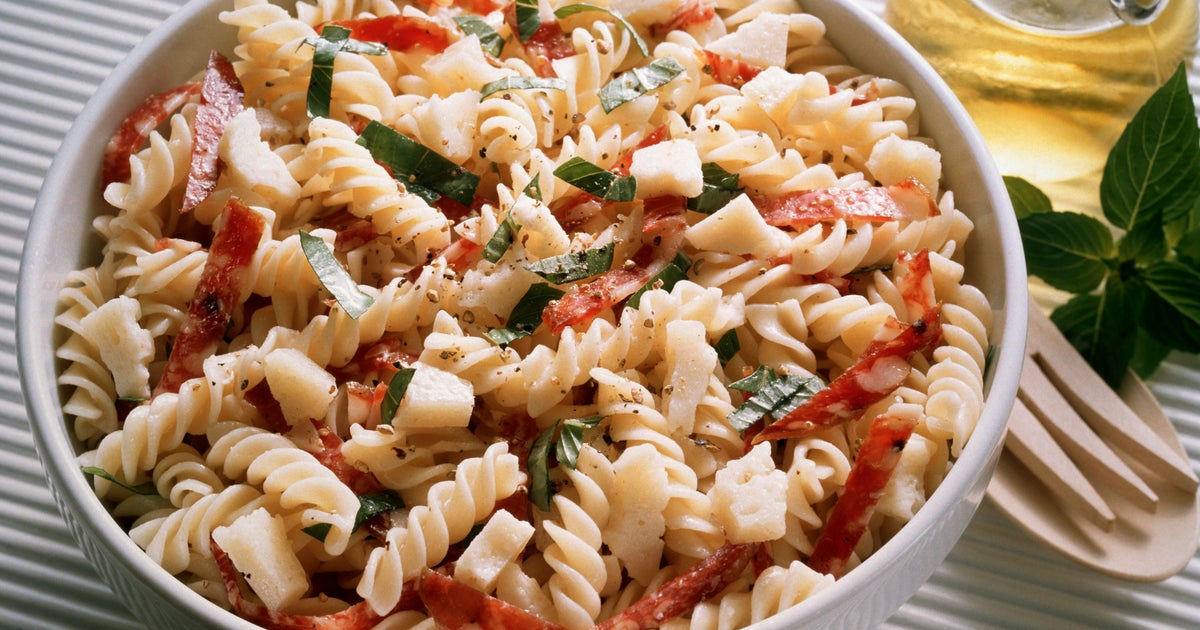
Have you ever experienced the disappointment of a pasta salad that looks vibrant and delicious on the picnic table, but turns out to be a sloppy mess? The pasta is mushy, the veggies are limp, and you find yourself secretly wishing for a dog to discreetly dispose of it under the table.
But fear not! There is a way to avoid this culinary catastrophe. As an experienced head chef in a deli, I perfected my pasta salad recipes to ensure they were always a hit. Allow me to share some valuable tips to help you avoid common pitfalls.
Believe me, even to this day, I cringe at the taste of a soggy pasta salad. So, I’m here to offer my guidance and assistance in creating the perfect pasta salad.
Mastering the Perfect Pasta
If you’re one of those individuals who believes that all pasta is the same and that the cheap options will do just fine, I’m here to tell you that you’re mistaken. Especially when it comes to pasta salads, where the pasta sits in an acidic marinade for hours.
Mediterranean-inspired pasta salads typically call for short, dried pasta varieties such as penne, shells, farfalle, or fusilli. Don’t waste your fresh pasta on a salad, as it won’t hold up well.
When selecting pasta for your salad, brands like DeCecco, Barilla, Rao’s, and DeLallo, which are made from durum semolina wheat, are your best bet. These brands use coarsely ground semolina flour and bronze dies to create a slightly rougher texture, superior to the lower-quality, Teflon-coated dies used in cheaper pasta.
To cook the pasta perfectly, follow the tried and true method, but with a bit more salt than usual. For every pound of pasta, boil a gallon of water with a tablespoon of salt, plus an extra teaspoon. This will properly season the pasta, as chilling tends to mute flavors, including salt.
While cooking the pasta, stir it occasionally to prevent sticking or uneven cooking. Set a timer for a minute less than the package instructions and then test it.
Cook Al Dente, But Not Too Al Dente
Cooking pasta that will be chilled requires a different approach. When testing your pasta, rinse a piece with cold water to completely cool it before taking that crucial bite.
Through my experience, I’ve learned that starches, such as those found in potatoes, rice, or pasta, can become firmer when cooked and chilled. Andrew Ross, a cereal chemist and professor, explains that this is due to starch recrystallization, where the starch molecules bond and create a stronger matrix as the food cools.
Therefore, aim to cook the pasta just past the firm stage, without it becoming flabby.
Perfectly Marinating Your Pasta
For the best results, prepare the dressing, chop the vegetables, and cook the pasta as close to serving time as possible. After draining the pasta, rinse it with warm water (not cold) and shake off excess moisture. While the pasta is still warm (but not hot), dress it with half of the dressing, and then add the remainder just before serving.
If you’re making the pasta salad ahead of time, keep the vegetables and dressed pasta separate until it’s ready to be served. At the last minute, toss them together to combine.
During my time at the deli, regular tastings revealed that the vibrant flavors of the pasta salad would become muted as the pasta absorbed the liquids and everything oxidized. To combat this, a quick addition of the same dressing or a blend of oil, acid, and a little salt will freshen it up.
Be aware that mayo, sour cream, and other creamy ingredients will soak into the pasta over time. If your salad has been in the fridge for a day or two, make sure to stir it well to redistribute any dressing and liquids from the vegetables that may have settled at the bottom. Add a touch of acid and salt to brighten the flavors.
Ingredients to Avoid
If you plan on adding ingredients like black beans, walnuts, or other dark foods, it’s best to add them just before serving. Otherwise, the noodles in contact with these ingredients in the fridge will absorb their pigments, resulting in dark spots on the pasta. Additionally, it’s advisable to wait until just before serving to add soft cheeses and delicate greens, as they can be ruined by prolonged exposure to acidic dressings.
Consider the Resilience of Whole Grains
For a hearty salad that only gets better with time, try using whole grains as the base. The same delightful flavors that complement a pasta salad can be enjoyed with cooked farro, whole oat groats, wild rice, or other whole grains. As these grains soak in the dressing, they become more tender and flavorful. A farro salad, for example, can sit in the fridge for four or five days without losing its texture. A simple toss with dressing before serving is all that’s needed to refresh it.
Denial of responsibility! VigourTimes is an automatic aggregator of Global media. In each content, the hyperlink to the primary source is specified. All trademarks belong to their rightful owners, and all materials to their authors. For any complaint, please reach us at – [email protected]. We will take necessary action within 24 hours.


